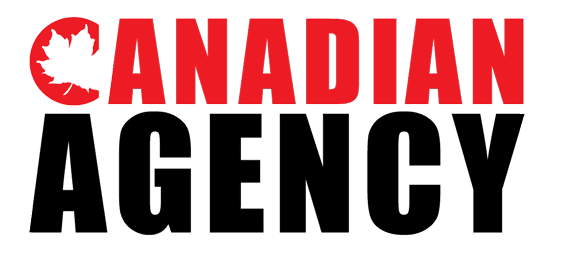In today’s digital-first world, software-as-a-service (SaaS) isn’t just about delivering features, it’s about delivering experiences. The competition in SaaS is fiercer than ever, with countless products vying for the attention (and wallets) of businesses and consumers. What often separates the winners from the rest isn’t just pricing, integrations, or even feature sets, it’s the user interface (UI) and user experience (UX) that shape how people interact with the product.
A robust UI/UX strategy has become more than just “good design.” It’s a business imperative that directly impacts adoption rates, customer satisfaction, retention, and revenue growth. Without it, even the most feature rich SaaS can quickly be abandoned in favor of a competitor that feels easier, cleaner, and more intuitive.
This blog will explore why UI/UX is critical to SaaS success, the core principles behind strong design strategies, and actionable steps SaaS founders and product teams can take to prioritize experience alongside functionality.
The Shifting SaaS Landscape: Why UI/UX Matters More Than Ever
The SaaS model thrives on recurring revenue. Unlike traditional software sales where the transaction ends at purchase, SaaS companies must continuously earn customer loyalty month after month. This ongoing relationship means that poor design or clunky experiences can directly lead to churn, while seamless and engaging design can build long term retention.
Here’s what has changed in the SaaS landscape that puts UI/UX in the spotlight:
- Crowded markets: From customer relationship management (CRM) to project management, nearly every SaaS category has dozens of competing products. Users can switch with a few clicks. The one with the better experience wins.
- Higher user expectations: Thanks to consumer apps like Airbnb, Spotify, and Slack, users expect SaaS platforms, even business tools, to be just as smooth, intuitive, and delightful.
- Shorter attention spans: Businesses don’t have the patience to train staff for weeks on clunky software. The faster users understand and adopt a SaaS product, the better.
- Word-of-mouth and reviews: SaaS success often depends on referrals and reviews. A frustrating UI will not only drive churn but also harm your reputation.
The takeaway? SaaS success is not just about features, it’s about how users feel when using those features.
Defining UI vs. UX in SaaS
Before diving deeper, let’s clarify what we mean by UI and UX in the SaaS context.
- UI (User Interface) refers to the visual and interactive elements of the product, buttons, typography, colors, menus, layouts. It’s the “look and feel.”
- UX (User Experience) goes beyond visuals to include the end-to-end journey, ease of navigation, onboarding flow, information architecture, and even how error messages are handled.
Think of UI as the car’s dashboard and UX as the entire driving experience. You can’t separate one from the other, they must work in harmony.
Why Every SaaS Needs a Strong UI/UX Strategy
1. First Impressions Drive Adoption
Users make split second judgments. If your SaaS product feels outdated or confusing at first glance, prospects won’t give it a second chance. A strong UI/UX strategy ensures:
- Clean, modern design that inspires trust.
- Intuitive navigation that minimizes learning curves.
- Clear onboarding that guides users toward value quickly.
Research shows that 88% of users are less likely to return after a poor experience. In SaaS, that’s a lost lifetime value.
2. UI/UX Reduces Churn
Churn is the silent killer of SaaS businesses. Even small improvements in retention can significantly increase revenue over time. Strong UX design plays a vital role by:
- Reducing friction in workflows.
- Helping users achieve their goals faster.
- Offering a sense of control and predictability.
If users find your tool frustrating or time-consuming, they’ll abandon it. But if they experience consistent value, they’ll stay.
3. Increases Customer Satisfaction and Loyalty
Customer loyalty isn’t built on features alone, it’s about how customers feel while using your product. Smooth interactions, helpful microcopy, and responsive design create a positive emotional connection. Loyal users don’t just renew, they advocate, recommend, and become your biggest marketing asset.
4. Boosts Conversion Rates
Your website and product UI directly impact conversions. A clear, intuitive interface can:
- Guide free-trial users to upgrade.
- Encourage users to explore premium features.
- Reduce friction in checkout and billing flows.
Good design is good business. For SaaS, UI/UX translates directly into MRR (monthly recurring revenue).
5. Supports Scalability and Growth
As SaaS products evolve with new features and integrations, a well-structured UX ensures scalability without overwhelming users. A solid design system keeps the product consistent and adaptable, making it easier to expand while maintaining clarity.
6. Differentiates You in Saturated Markets
When features start to look identical across competitors, experience becomes the true differentiator. Products like Notion, Slack, and Figma disrupted their industries not just with functionality, but with elegant, user-first design.
Core Elements of a Strong SaaS UI/UX Strategy
So, what does it take to build a UI/UX strategy that ensures SaaS success? Here are the pillars:
- User Research & Empathy
- Conduct surveys, interviews, and usability tests.
- Build personas to understand user pain points.
- Map out user journeys to identify friction points.
- Simple, Intuitive Navigation
- Keep menus clear and organized.
- Avoid feature bloat, prioritize clarity over complexity.
- Use progressive disclosure: reveal advanced features only when needed.
- Effective Onboarding
- Provide tooltips, walkthroughs, and sample projects.
- Highlight “aha moments” quickly to show value.
- Offer multiple formats (videos, docs, live chat) for support.
- Consistency in Design
- Use a design system for typography, color, and layout.
- Maintain predictable patterns so users don’t relearn behaviors.
- Ensure consistency across desktop, mobile, and integrations.
- Feedback and Error Handling
- Offer clear error messages that guide users to solutions.
- Provide visual feedback (loading states, confirmations).
- Let users undo actions, reducing fear of making mistakes.
- Accessibility
- Design for all users, including those with disabilities.
- Follow WCAG guidelines (contrast ratios, keyboard navigation, alt text).
- Accessibility isn’t just compliance, it broadens your user base.
- Performance and Speed
- Optimizing load times slow interfaces kill UX.
- Minimize clicks for common tasks.
- Test across devices and browsers.
Case Studies: SaaS Companies Winning with UI/UX
1. Slack
Slack turned workplace chat into a delightful experience with playful design, intuitive onboarding, and responsive interactions. Its strong UI/UX helped it dominate in a crowded market.
2. Notion
Notion succeeded by combining powerful functionality with minimalist design. Its drag-and-drop interface and clean aesthetics make complex knowledge management feel simple.
3. Dropbox
Dropbox nailed simplicity from the start. The drag-and-drop file upload and clear UX messaging made cloud storage intuitive, driving rapid adoption.
The ROI of Investing in UI/UX
SaaS founders often hesitate to invest heavily in design, assuming it’s a “nice-to-have.” But research consistently shows the ROI of UI/UX:
- Every $1 invested in UX brings an average return of $100.
- Good design reduces development costs by minimizing rework.
- Improved retention compounds revenue growth year after year.
When you look at UI/UX not as a cost, but as a growth engine, the business case becomes clear.
Building a UI/UX-First Culture in SaaS
To truly succeed, UI/UX can’t be an afterthought. It must be woven into the DNA of the company. Here’s how:
- Make design a leadership priority: Founders should champion design thinking.
- Cross-functional collaboration: Designers, developers, marketers, and product managers must align on experience goals.
- Continuous iteration: Treat design as a living process. Regularly test, gather feedback, and refine.
- Measure what matters: Track metrics like task success rate, churn, NPS, and feature adoption to gauge UX impact.
Actionable Steps for SaaS Companies
If you’re building or scaling a SaaS product, here’s a roadmap to strengthen your UI/UX strategy:
- Audit your product: Identify friction points and design inconsistencies.
- Prioritize onboarding: Ensure users find value within the first session.
- Streamline workflows: Reduce unnecessary steps and clicks.
- Invest in a design system: Scale design efficiently.
- Collect user feedback continuously: Use analytics, heatmaps, and surveys.
- Test accessibility: Ensure inclusivity.
- Hire or partner with experts: Agencies or dedicated UI/UX designers bring fresh perspective.
Final Thoughts
At its core, SaaS is about solving problems. But in a marketplace overflowing with tools that claim to do the same thing, the real battleground isn’t functionality, it’s usability. Two SaaS products might offer identical features, but the one that users can learn in minutes, enjoy using daily, and recommend to their peers will always win. That’s the power of a strong UI/UX strategy.
Think of the most successful SaaS products today, Slack, Zoom, Canva, Figma. Were they the first in their categories? Not always. Were they the most feature-packed? Again, not necessarily. What they did differently was obsess over the experience. They made their platforms feel approachable, elegant, and even fun. This is why their adoption rates skyrocketed while competitors struggled to retain users.
For SaaS founders, this is both a challenge and an opportunity. The challenge is that users now demand excellence, they won’t tolerate outdated interfaces or confusing workflows. The opportunity, however, is that investing in UI/UX can immediately set you apart in a crowded market. When your product feels intuitive, you reduce the need for long training sessions, shorten the sales cycle, and increase customer satisfaction.
The financial upside of good design cannot be overstated. A smoother onboarding flow might shave days off the time-to-value for new customers. A well-placed tooltip or simplified menu might reduce support tickets by 30%. Clearer interfaces lead to higher conversion rates from free to paid plans. And when churn drops even by a small percentage, the impact on annual recurring revenue compounds dramatically. In other words, design doesn’t just make your SaaS look good, it makes your SaaS grow.
Looking ahead, the importance of UI/UX in SaaS will only intensify. With the rise of AI-powered software, low-code/no-code platforms, and hyper-personalization, users will expect interfaces that adapt to their behavior and anticipate their needs. The future of SaaS design will be about invisible UX, where the product feels so natural that users barely notice the design at all. Voice interfaces, predictive dashboards, and automated workflows will push SaaS teams to think even more deeply about how humans interact with machines.
And here’s the truth: investing in UI/UX is no longer optional. It’s as critical as your pricing model, security infrastructure, or marketing strategy. In fact, it is your strategy. Because while marketing may bring customers in the door, it’s the experience that keeps them from leaving.
So if you’re building or scaling a SaaS company today, make this your resolution: treat design as a business priority, not an afterthought. Hire skilled designers early. Involve them in product strategy, not just aesthetics. Encourage cross-team collaboration where engineers, marketers, and designers align on delivering seamless user journeys. Test relentlessly. Iterate quickly. And above all, never forget that behind every click is a human being with limited time, limited patience, and limitless options.
The SaaS industry is littered with products that had brilliant features but failed to survive because they ignored this truth. Don’t let your product become one of them. Instead, make UI/UX your competitive advantage, the invisible force that turns casual users into loyal advocates, and loyal advocates into your greatest growth engine.
At the end of the day, people don’t remember every feature your software had. They remember how it made them feel. Did it frustrate them, or did it empower them? Did it waste their time, or did it save their time? Did it feel like yet another tool, or did it feel like a partner in their success?
The answers to those questions will determine the fate of every SaaS business. And that’s why every SaaS, not just the big players, but the startups, the niche platforms, the innovators needs a strong UI/UX strategy to succeed.




